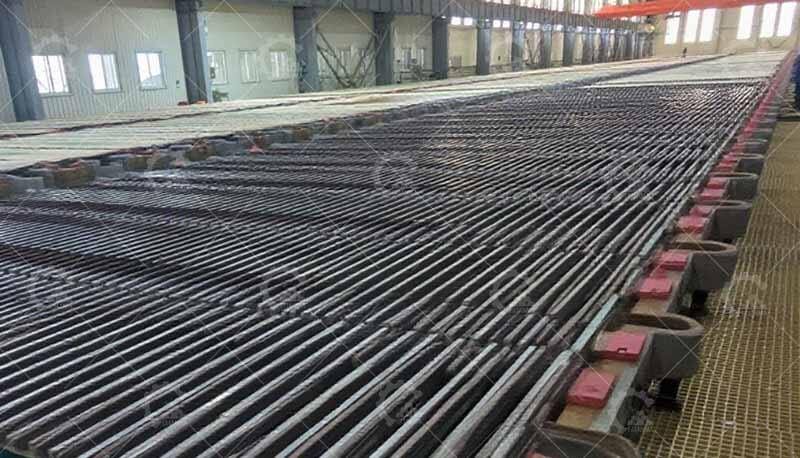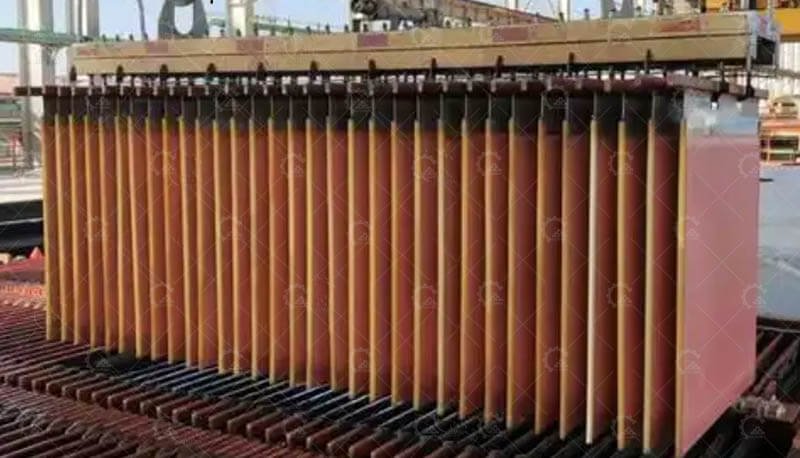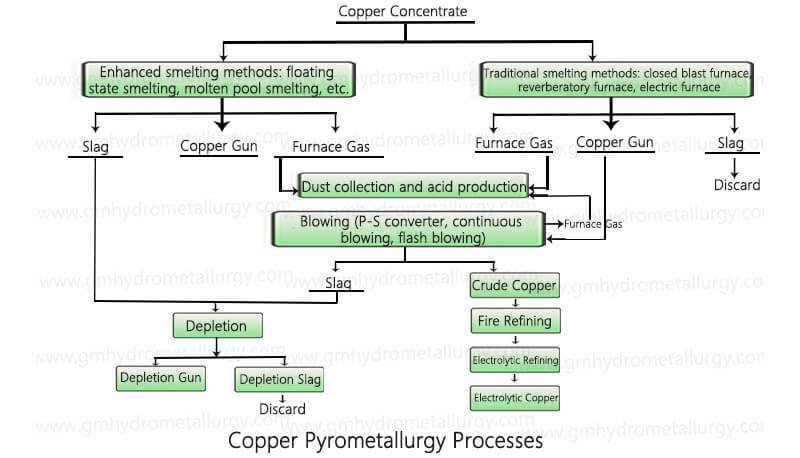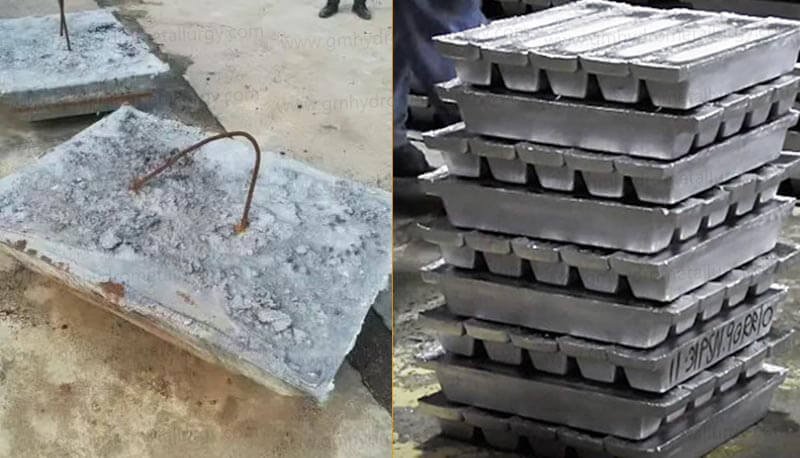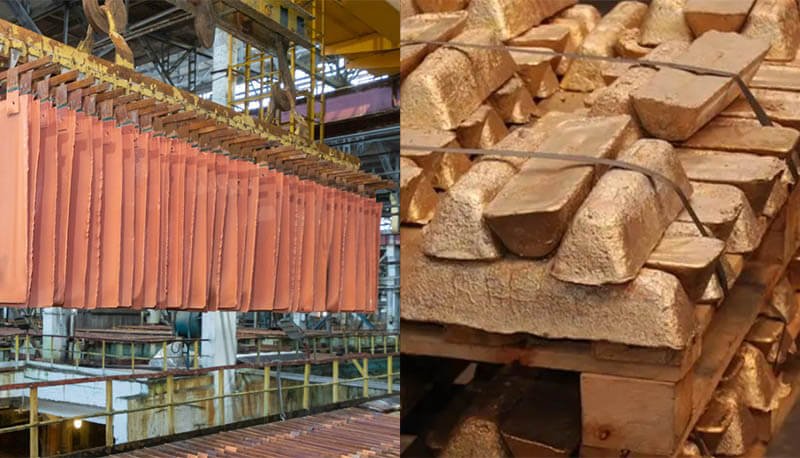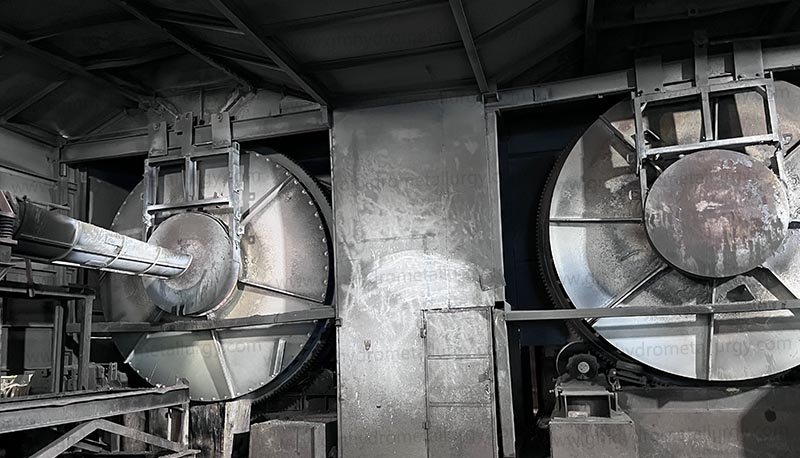In the global copper industry, copper electrolysis system stand as the backbone of high-purity copper production, ensuring metals meet the stringent demands of electronics, construction, and renewable energy sectors.
Understanding Copper Electrolysis: The Science Behind Purity
A copper electrolysis system uses electrochemical processes to purify impure copper anodes (typically 98–99% pure) into cathode copper exceeding 99.99% purity . The process involves:
1. Electrolyte Composition
A solution of copper sulfate (CuSO₄) and sulfuric acid (H₂SO₄) facilitates ion migration.
2. Electrolytic Cells
Anodes dissolve, releasing Cu²⁺ ions that migrate to cathodes, where they deposit as pure copper. Impurities like lead, zinc, and precious metals (gold, silver) either dissolve into the electrolyte or settle as anode slime.
3. Energy Efficiency
Modern systems optimize current density (e.g., 200–300 A/m²) and electrolyte circulation to reduce energy consumption by 30% compared to traditional methods.
Key Components of a High-Performance System
To achieve superior results, your system must integrate cutting-edge components:
1. Electrolytic Cells
Constructed with corrosion-resistant FRP or polymer concrete, these cells ensure longevity and stability.
2. Rectifiers
High-frequency IGBT rectifiers (e.g., 20kA/18V models) deliver precise current control, minimizing energy waste .
3. Automated Anode/Cathode Handling
Units like cathode stripping machines and anode processing lines streamline operations, reducing labor costs by 50%.
4. Waste Management
Closed-loop systems treat exhaust gases and wastewater, converting byproducts into reusable chemicals (e.g., sulfuric acid).
Solving Common Challenges in Copper Refining
1. Impurity Management
Precious Metal Recovery: Anode slimes contain up to 25% of global silver production. Advanced systems recover these metals through specialized refining, turning waste into profit.
Passivation Prevention: Pulse electrolysis and automated polarity reversal combat anode passivation, ensuring consistent performance.
2. Energy Optimization
Advanced Power Supply: Systems like the dynamic electrorefining technology achieve 97.5–98.2% purity with 1.9 MWh/ton energy consumption, outperforming traditional smelters (2.8–3.2 MWh/ton).
Renewable Integration: Pairing solar/wind power with electrolysis aligns with net-zero goals, as seen in projects using hydropower to reduce carbon footprints.
3. Scalability and Customization
Modular Design: Systems like Nuton’s bio-leaching technology adapt to 50–500 tons/day capacities, ideal for both small-scale recycling and large mining operations.
Tailored Solutions: Custom configurations (e.g., high-current-density cells for PCB manufacturing) meet niche requirements, such as 99.99% purity for electronics.
Why Choose a Modern Copper Electrolysis System?
1. Unmatched Purity for Critical Industries
Electronics: High-conductivity copper for PCBs and semiconductors requires >99.99% purity, achievable through precise electrolyte control.
Renewables: Copper in EV motors and wind turbines demands corrosion resistance, ensured by electrolytic refining.
2. Cost and Resource Efficiency
Reduced Waste: Closed-loop systems recycle 95% of water and chemicals, cutting operational costs by 20%.
Anode Sludge Value: Byproducts like gold and silver offset up to 15% of production costs.
3. Environmental Compliance
Low Emissions: Technologies like membrane cells and sulfur recovery units eliminate sulfur dioxide (SO₂) release, aligning with EU REACH and EPA standards.
Sustainable Mining: Bio-leaching systems (e.g., Nuton) process low-grade ores without smelting, reducing water use by 40%.
Choosing the Right System for Your Needs
1. Production Scale
Small-scale: Portable units (e.g., 1000A/12V models) suit recycling workshops.
Large-scale: Turnkey EPC solutions (250,000 TPA capacity) integrate automation for continuous output.
2. Energy Source
Prioritize systems compatible with renewable energy to lower carbon costs.
3. After-Sales Support
Partner with suppliers offering remote diagnostics, spare parts, and operator training.
Future Trends in Copper Electrolysis
AI-Driven Optimization
Machine learning predicts anode dissolution rates and adjusts parameters in real time .
Direct Sulfide Electrolysis
MIT’s breakthrough technology eliminates smelting, producing copper and sulfur gas directly from sulfide ores .
Circular Economy
Systems now process e-waste to recover copper and rare earth metals.
A copper electrolysis system is not just equipment—it’s a strategic investment in quality, efficiency, and sustainability. Whether you’re refining copper for automotive wiring or renewable energy infrastructure, the right system ensures purity, profitability, and a greener future.
Need a tailored solution? Contact us to discuss how our custom copper electrolysis systems can elevate your operations.



